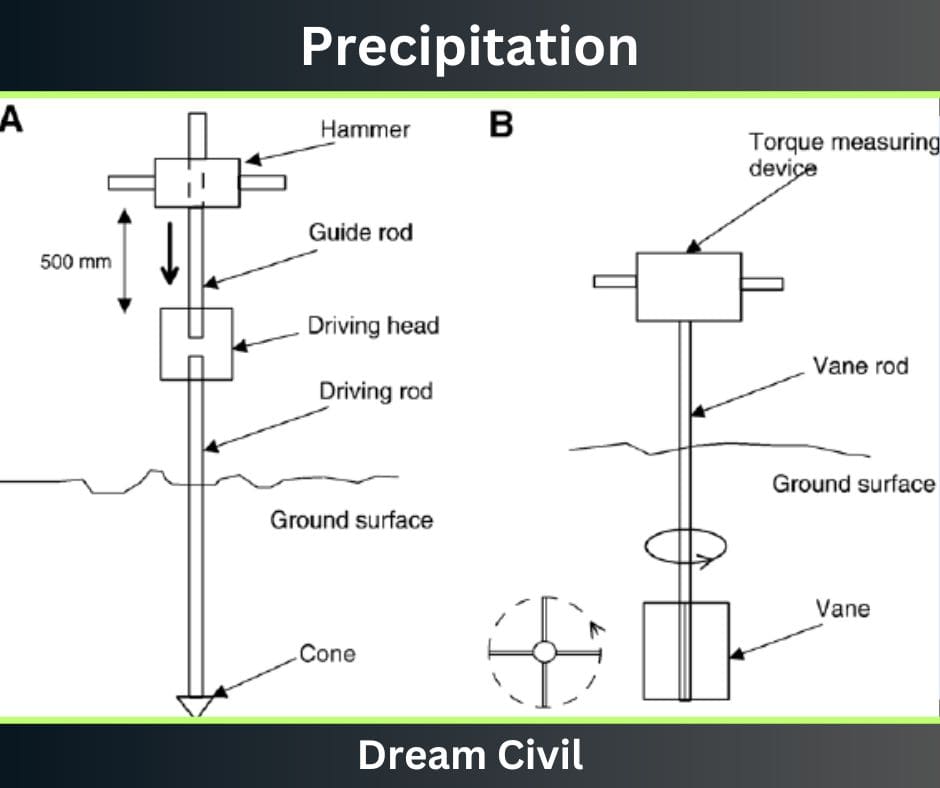Table of Contents
This article will discuss the Dynamic Cone Penetration Test, its lab procedure and precautions.
Highway pavements are essential to the transportation system, providing access and establishing linkages worldwide.
Due to its utmost(greatest) importance, there has been a need to construct structurally sound highways and facilitate the easy and comfortable movement of traffic.
The stability and quality of roads are thus checked by several tests.
Among the tests, the Dynamic Cone Penetration Test is one.
The Dynamic Cone Penetration Test is a test carried out to check the structural properties of existing pavements. It was developed by Transport and Road Research Laboratory in England.
It is also called as DCP Test.
1. Apparatus Required
DCP Apparatus:
The dynamic cone penetration test apparatus consists of a steel rod with a 60-degree conical tip. The rod is further topped by an anvil which is further connected to a steel rod.
This rod guides the hammer to be raised and dropped from a height of about 575 mm.

2. Procedure of Dynamic Cone Penetration Test (DCP Test)
1. The test apparatus is first assembled. After assembling, the apparatus’s initial reading( zero reading) is recorded. This is done by standing the apparatus on a hard surface such as concrete, checking that it is vertical, and then entering zero.
2. The instrument is then held vertically, and the weight is carefully raised to the handle. It must be ensured that the weight is touching the handle.
3. The readings are then noted at an increment of about 10mm. This step is carried out by dropping the weight above the pavement.
4. After completing the DCP test, the penetrometer is gently removed by tapping the weight against the handle. This process should be done with great care. Otherwise, it may result in damage to the instrument.
3. Correlations to Engineering Parameters
log(DPI) = -1.05 + 2.03 * log(SPT)
Where;
- CBR = California Bearing Ratio
- DPI = DCP Penetration Index
- SPT = Standard Penetration Test (ASTM D 1586-64)
4. Precautions in DCP Test
a. Removal of the penetrometer should be done with great care while taken out after the test.
b. Reading must be taken carefully.
5. References1. Content Filter & Authenticity Checking Team, Dream Civil International (Our team checks every content & detail to maintain quality.) |
Read Also: Plastic Limit Test

